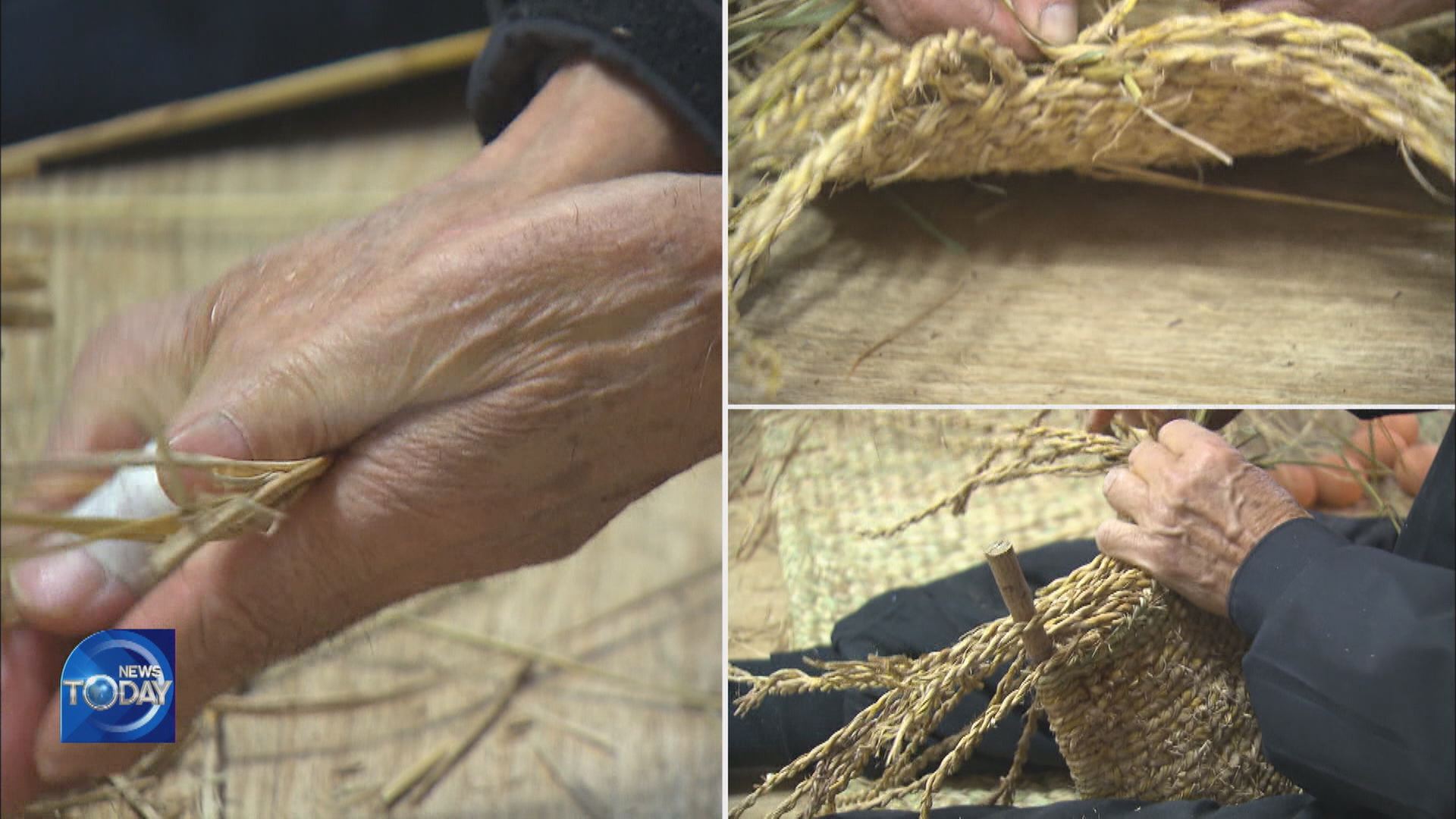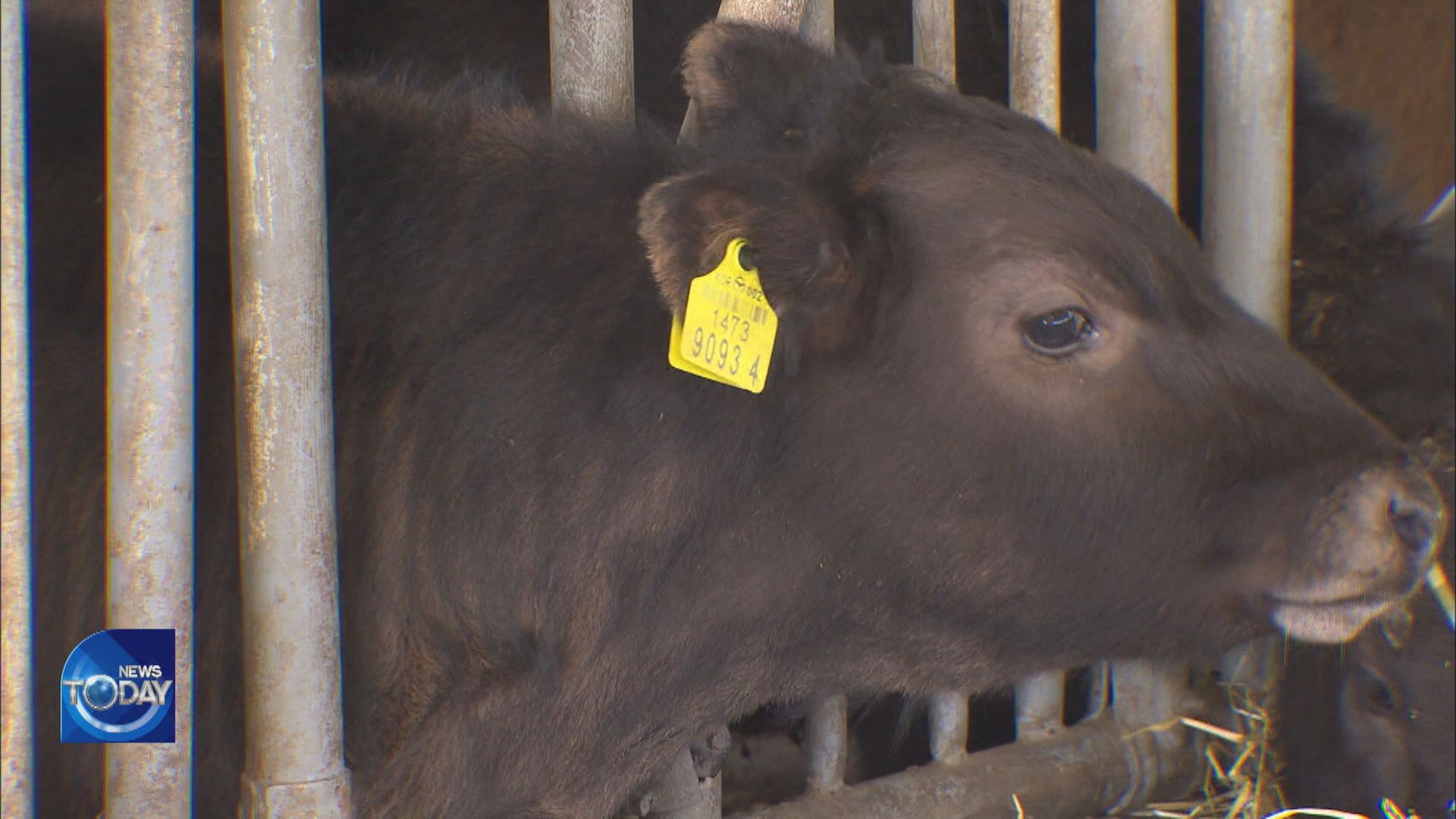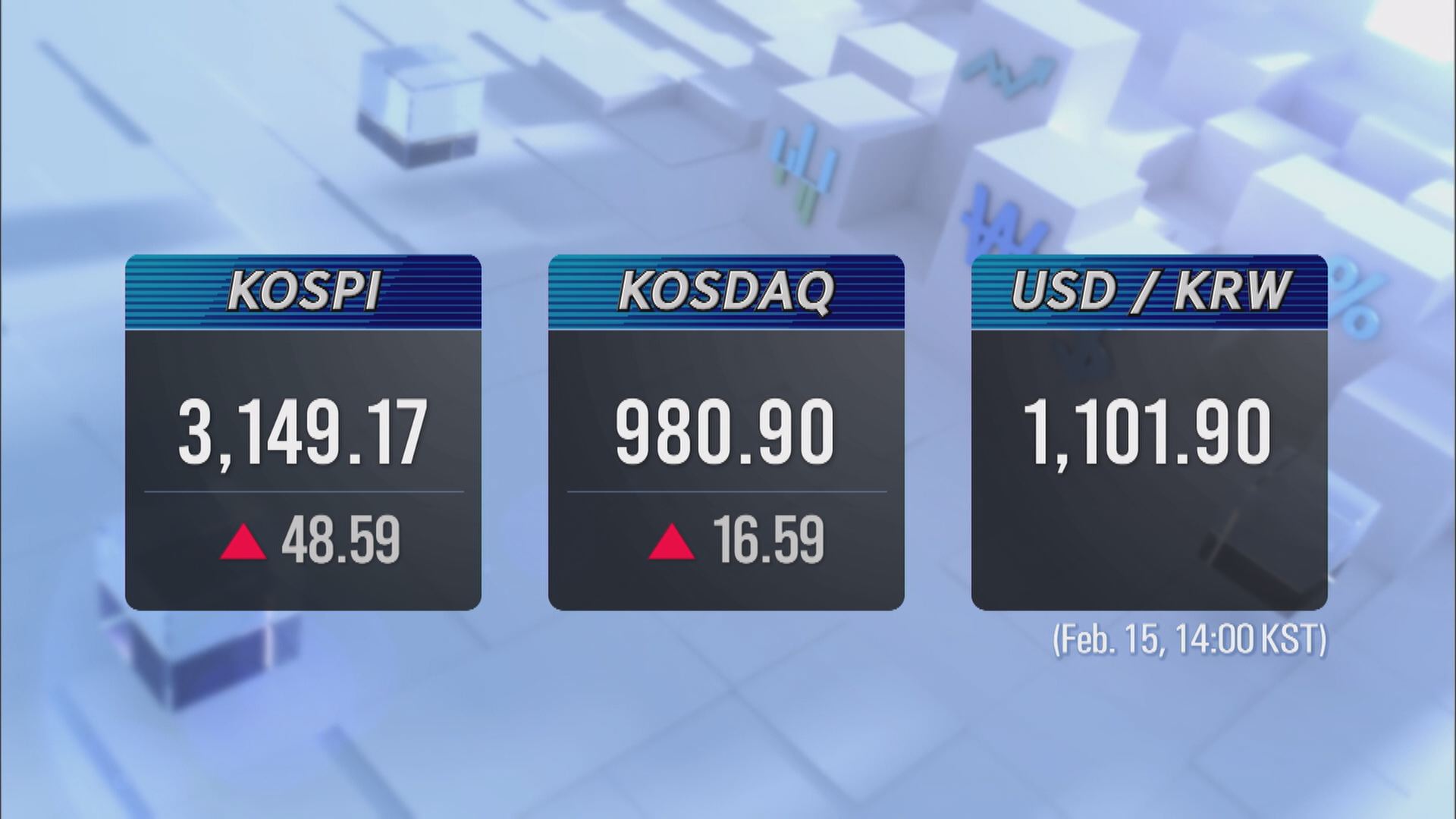FADING OF RICE STRAW WEAVING
입력 2021.02.15 (14:56)
수정 2021.02.15 (16:46)
읽어주기 기능은 크롬기반의
브라우저에서만 사용하실 수 있습니다.
[Anchor Lead]
Koreans used to use rice straw to make a variety of items, such as shoes, mats and baskets. In the early 2000s, rice straw weaving gained publicity as a traditional handcraftship and many hands-on programs were operated to teach the technique. But, it has lost its ground with waning public interest.
[Pkg]
Bujeol Village near Jirisan Mountain is known for rich soil and high-quality rice, which was good enough to be sent up to the king. Naturally, it has a long tradition of producing items with paddy straw. This lifelong farmer nimbly moves his rough hands to make delicate straw craftworks. He twists ropes and weaves a mat and a net bag.
[Soundbite] Lee Kang-ryol(88 years old) : "I made my first straw sack when I was 12 years old, so I've been making rice straw craftworks for over 70 years now."
Straw handcraft needs a team of two and teamwork between the pair is crucial.
[Soundbite] Choi Man-sik, Im Man-geun : "We have done this work for over 50 years. We began when we were around 20."
With widespread popularity of straw craftwork, farmers used to earn an extra 60 million won a year. That is no longer the case.
[Soundbite] Park Sang-kil(Bujeol Village) : "We won all the prizes. We even received a top prize and many certificates of awards. But a master weaver has passed away."
Opened in 1996, this facility runs a program for visitors to try their hands at straw crafting. The intricate nature of the work helps people get absorbed in what they are making.
[Soundbite] Min Kyeong-ae(Gapyeong County) : "It would get uneven if you fail to assemble the straw at the same height and twist them in the right direction."
The program was once very popular, drawing in families who made items out of rice straw in an hour. However, it has received fewer visitors since the outbreak of the COVID-19 pandemic, coupled with waning popularity. It was selected as a government employment support program and there are now some ten workers to produce straw craftworks. But the sales outlook is not bright with nowhere to sell them.
[Soundbite] Choi Seok-bong(Head, Cheongsalrim Rice Straw Craft Workshop) : "When we offer a price, customers just turn it down, saying it is too expensive. They don't consider what we put into the products. We feel discouraged."
Rice straw craft is a valuable cultural asset left by Korea's long farming history. There is an urgent need to come up with measures to utilize and preserve the traditional handicraft technique.
Koreans used to use rice straw to make a variety of items, such as shoes, mats and baskets. In the early 2000s, rice straw weaving gained publicity as a traditional handcraftship and many hands-on programs were operated to teach the technique. But, it has lost its ground with waning public interest.
[Pkg]
Bujeol Village near Jirisan Mountain is known for rich soil and high-quality rice, which was good enough to be sent up to the king. Naturally, it has a long tradition of producing items with paddy straw. This lifelong farmer nimbly moves his rough hands to make delicate straw craftworks. He twists ropes and weaves a mat and a net bag.
[Soundbite] Lee Kang-ryol(88 years old) : "I made my first straw sack when I was 12 years old, so I've been making rice straw craftworks for over 70 years now."
Straw handcraft needs a team of two and teamwork between the pair is crucial.
[Soundbite] Choi Man-sik, Im Man-geun : "We have done this work for over 50 years. We began when we were around 20."
With widespread popularity of straw craftwork, farmers used to earn an extra 60 million won a year. That is no longer the case.
[Soundbite] Park Sang-kil(Bujeol Village) : "We won all the prizes. We even received a top prize and many certificates of awards. But a master weaver has passed away."
Opened in 1996, this facility runs a program for visitors to try their hands at straw crafting. The intricate nature of the work helps people get absorbed in what they are making.
[Soundbite] Min Kyeong-ae(Gapyeong County) : "It would get uneven if you fail to assemble the straw at the same height and twist them in the right direction."
The program was once very popular, drawing in families who made items out of rice straw in an hour. However, it has received fewer visitors since the outbreak of the COVID-19 pandemic, coupled with waning popularity. It was selected as a government employment support program and there are now some ten workers to produce straw craftworks. But the sales outlook is not bright with nowhere to sell them.
[Soundbite] Choi Seok-bong(Head, Cheongsalrim Rice Straw Craft Workshop) : "When we offer a price, customers just turn it down, saying it is too expensive. They don't consider what we put into the products. We feel discouraged."
Rice straw craft is a valuable cultural asset left by Korea's long farming history. There is an urgent need to come up with measures to utilize and preserve the traditional handicraft technique.
■ 제보하기
▷ 카카오톡 : 'KBS제보' 검색, 채널 추가
▷ 전화 : 02-781-1234, 4444
▷ 이메일 : kbs1234@kbs.co.kr
▷ 유튜브, 네이버, 카카오에서도 KBS뉴스를 구독해주세요!
- FADING OF RICE STRAW WEAVING
-
- 입력 2021-02-15 14:56:42
- 수정2021-02-15 16:46:38

[Anchor Lead]
Koreans used to use rice straw to make a variety of items, such as shoes, mats and baskets. In the early 2000s, rice straw weaving gained publicity as a traditional handcraftship and many hands-on programs were operated to teach the technique. But, it has lost its ground with waning public interest.
[Pkg]
Bujeol Village near Jirisan Mountain is known for rich soil and high-quality rice, which was good enough to be sent up to the king. Naturally, it has a long tradition of producing items with paddy straw. This lifelong farmer nimbly moves his rough hands to make delicate straw craftworks. He twists ropes and weaves a mat and a net bag.
[Soundbite] Lee Kang-ryol(88 years old) : "I made my first straw sack when I was 12 years old, so I've been making rice straw craftworks for over 70 years now."
Straw handcraft needs a team of two and teamwork between the pair is crucial.
[Soundbite] Choi Man-sik, Im Man-geun : "We have done this work for over 50 years. We began when we were around 20."
With widespread popularity of straw craftwork, farmers used to earn an extra 60 million won a year. That is no longer the case.
[Soundbite] Park Sang-kil(Bujeol Village) : "We won all the prizes. We even received a top prize and many certificates of awards. But a master weaver has passed away."
Opened in 1996, this facility runs a program for visitors to try their hands at straw crafting. The intricate nature of the work helps people get absorbed in what they are making.
[Soundbite] Min Kyeong-ae(Gapyeong County) : "It would get uneven if you fail to assemble the straw at the same height and twist them in the right direction."
The program was once very popular, drawing in families who made items out of rice straw in an hour. However, it has received fewer visitors since the outbreak of the COVID-19 pandemic, coupled with waning popularity. It was selected as a government employment support program and there are now some ten workers to produce straw craftworks. But the sales outlook is not bright with nowhere to sell them.
[Soundbite] Choi Seok-bong(Head, Cheongsalrim Rice Straw Craft Workshop) : "When we offer a price, customers just turn it down, saying it is too expensive. They don't consider what we put into the products. We feel discouraged."
Rice straw craft is a valuable cultural asset left by Korea's long farming history. There is an urgent need to come up with measures to utilize and preserve the traditional handicraft technique.
Koreans used to use rice straw to make a variety of items, such as shoes, mats and baskets. In the early 2000s, rice straw weaving gained publicity as a traditional handcraftship and many hands-on programs were operated to teach the technique. But, it has lost its ground with waning public interest.
[Pkg]
Bujeol Village near Jirisan Mountain is known for rich soil and high-quality rice, which was good enough to be sent up to the king. Naturally, it has a long tradition of producing items with paddy straw. This lifelong farmer nimbly moves his rough hands to make delicate straw craftworks. He twists ropes and weaves a mat and a net bag.
[Soundbite] Lee Kang-ryol(88 years old) : "I made my first straw sack when I was 12 years old, so I've been making rice straw craftworks for over 70 years now."
Straw handcraft needs a team of two and teamwork between the pair is crucial.
[Soundbite] Choi Man-sik, Im Man-geun : "We have done this work for over 50 years. We began when we were around 20."
With widespread popularity of straw craftwork, farmers used to earn an extra 60 million won a year. That is no longer the case.
[Soundbite] Park Sang-kil(Bujeol Village) : "We won all the prizes. We even received a top prize and many certificates of awards. But a master weaver has passed away."
Opened in 1996, this facility runs a program for visitors to try their hands at straw crafting. The intricate nature of the work helps people get absorbed in what they are making.
[Soundbite] Min Kyeong-ae(Gapyeong County) : "It would get uneven if you fail to assemble the straw at the same height and twist them in the right direction."
The program was once very popular, drawing in families who made items out of rice straw in an hour. However, it has received fewer visitors since the outbreak of the COVID-19 pandemic, coupled with waning popularity. It was selected as a government employment support program and there are now some ten workers to produce straw craftworks. But the sales outlook is not bright with nowhere to sell them.
[Soundbite] Choi Seok-bong(Head, Cheongsalrim Rice Straw Craft Workshop) : "When we offer a price, customers just turn it down, saying it is too expensive. They don't consider what we put into the products. We feel discouraged."
Rice straw craft is a valuable cultural asset left by Korea's long farming history. There is an urgent need to come up with measures to utilize and preserve the traditional handicraft technique.
이 기사가 좋으셨다면
-
좋아요
0
-
응원해요
0
-
후속 원해요
0

















이 기사에 대한 의견을 남겨주세요.